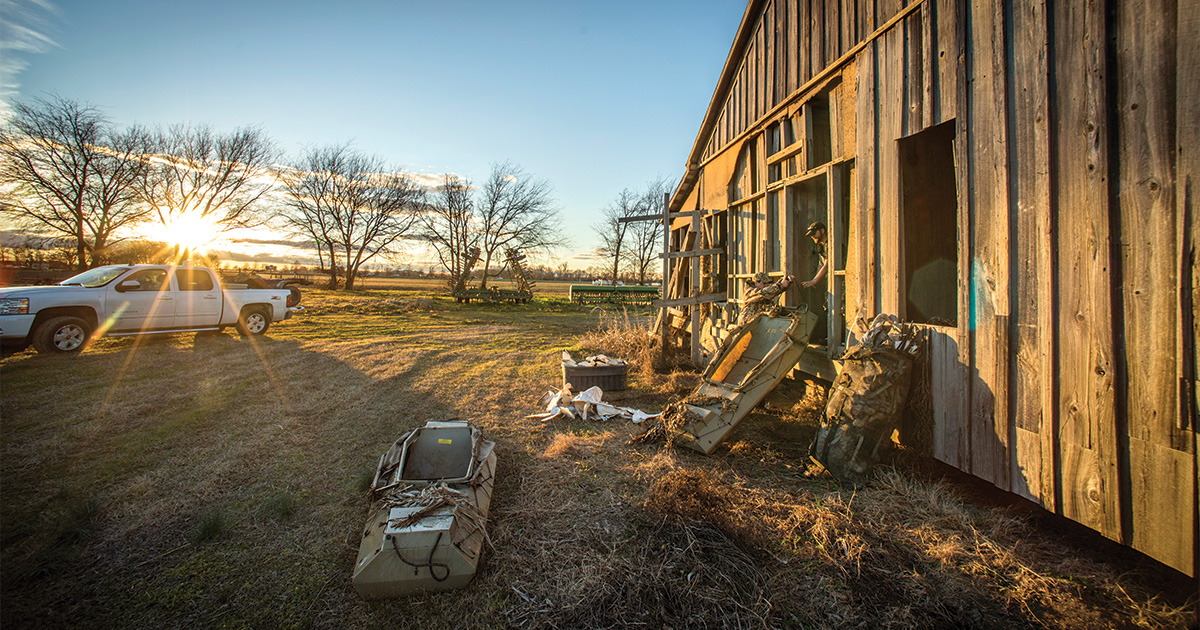Off-Season To-Do List
Get ready for opening day by crossing these tasks off your list
Get ready for opening day by crossing these tasks off your list

The off-season is a time of preparation for waterfowl hunters, and a to-do list is the perfect way to stay focused on the process of getting ready for fall. The five items on this list will help get you ready to hit the ground running when the season finally rolls around.
The overall health and performance of your retriever in the fall are directly linked to work done during the summer months. So whether you enlist the help of a trainer or do it yourself, your retriever should be a top priority.
When training, be sure to focus on situations that are similar to what your retriever will experience while hunting. This includes incorporating a dog stand, blind, or any other piece of dog-related gear. Your four-legged partner will be much more comfortable and confident using these tools in the field, and that will lead to smoother hunts and more birds in hand.
As fun as it is to rattle off a feeding chuckle on a duck call, the basic greeting call is the one call to focus on this summer. The five descending notes of the greeting call are the building blocks for just about any other call you might need in the marsh. Draw the notes out and add volume for the hail call, add speed for a comeback call, reduce the volume for birds working close, and draw it down to a just a single quack for confidence or finishing birds. If you can blow a greeting call, you will put more ducks in your decoys.
Waterfowl hunting can be a gear-intensive adventure, so if your days in the marsh or the field involve any sort of mechanical tools like pumps, boat motors, or motorized motion decoys, give them a once-over now. Be sure to change spark plugs, top off oil reserves, and replace parts and batteries as needed.
The off-season is also a good time to inspect ATVs, UTVs, and boat trailers to make sure that lights, wiring, brakes, jacks, hinges, and tires (including the spare) are in working order and that wheel bearings are greased. Ask for help if you don’t know how.
Spending time on the shooting range in the summer isn’t just a good way to improve your shooting success in the fall; it’s also a fun way to connect with hunting partners in the off-season. If your goal is to bust more clays than your pals, imagine that the clay pigeon is a drake mallard and keep in mind a simple saying that shooting coaches use to help their students swing through the target: butt, belly, beak, bang.
In between rounds of clays, get your shotgun to a gunsmith for a professional cleaning before fall arrives. This will help your regular maintenance at home go a lot further during the season.
Staying concealed from the watchful eyes of ducks and geese may be the most important thing a hunter can do, and you can get a jump-start on this during the summer by spending some time working on your blind.
If you use a layout or A-frame blind, clean off any old grass or stalks from last season and use zip ties to add a light base layer of synthetic grass, which will help save time in the fall. When hunting season begins, add real cover from the surrounding area to complete your hide.
If you hunt from a permanent structure, grab some friends and start cutting branches to cover the blind while the leaves are still green. Once the trees start to change colors, the leaves tend to fall off a lot easier. And don’t be afraid to cut extra branches to have on hand for touching up the blind throughout the season. Putting in a little extra time now will save you a lot of time later.
Ducks Unlimited uses cookies to enhance your browsing experience, optimize site functionality, analyze traffic, and deliver personalized advertising through third parties. By continuing to use this site, you agree to our use of cookies. View Privacy Policy